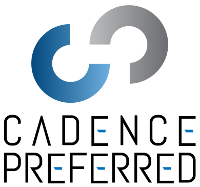The Targeting Advantage: How Identifying Your Ideal Prospects Will Help You Close More Deals
While it may be tempting to cast the widest net possible when trying to attract new customers, this may not actually deliver the most—or the best—prospects. Today, growing your business doesn’t mean throwing a bunch of marketing dollars at generic campaigns and seeing what sticks; it’s about targeting the most ideal prospects in order to bring in well qualified, high-propensity leads from the start. A well crafted targeting strategy not only helps you cut down on the effort (and cost) required to find qualified leads while starting them farther up your sales funnel, but does double-duty by helping you hone in on the characteristics, needs, and buying processes of your ideal customers. With well-defined personas and segments, you can approach the right prospects with most relevant offers at the right time and increase the likelihood of closed deals.
The bottom line here? Don’t try to market to everyone. Only market to those who are the most likely to buy what you’re selling—all while demonstrating that you understand exactly what they need. In today’s oversaturated market, buyers have no shortage of selections on just about everything, not to mention they’re likely desensitized to a high volume of cold calls, emails, and advertisements every day. This means you have to try that much harder to break through the noise, and personalization is key. In fact, 93 percent of B2B marketers that personalized their campaign approach in 2020 won more customers and increased their revenues over the following months.1 Delivering personalized, highly relevant marketing campaigns starts with defining your target segments and personas, what their individual needs are, and how you can address them.
Here are some considerations to get you started:
Identify your best current customers: A helpful place to start is by looking at the customers you already have. Identify those that bring in the most revenue and who do repeat business with you, then look for commonalities among them—are there any industries that your product sells particularly well with, or a particular company size, or a certain region?
Define your buyer personas: Who are the individuals that you typically deal with? Is it members of the C-suite, or do you deal more with those on the IT side of things? What are their primary concerns or needs? And what is their typical buying process like? The key here is to find ways to approach the key decision-makers with what’s particularly relevant to their individual needs or pain points.
Determine smaller, individual segments: Once you have a feel for the best company types and buyers within those companies, establishing individual audience segments will help you immensely in delivering campaigns that are more personalized and relevant to each of them. For instance, a buyer in the healthcare industry will have highly specific concerns around things like compliance, whereas a buyer in the manufacturing industry will be more concerned with maybe cost optimization. Similarly, a CEO might be more interested in how your solution can save them money, whereas an IT manager would be more concerned with how you can help improve performance. Establishing separate segments allows you to develop more effective and focused campaigns directed at the specific needs of various industries, buyer groups, regions, etc. This can help optimize your marketing costs, as well, when you’re not spending money on generic ads or engagements to people who are completely uninterested in your product or don’t find it inherently relevant to their needs.
Want help defining your target audiences or getting started with segmented campaigns? Connect with our marketing specialists at Cadence Preferred today!

